The week at a glance
- Black-browed Albatross off the Cornish coast
- Great Spotted Cuckoo in Norfolk
- Zitting Cisticola in Kent, two still on Guernsey
- Possible Scopoli's Shearwater off Scilly
Well, what a weird week. The weather remained generally rather unsettled across the country as sunshine and showers were still the dominant feature. The odd bright, warm day was to be had but almost as soon as the good weather appeared the bad weather nipped in behind to dampen the spirits once more. However, in terms of rarities, there was little (if anything) to rain on the parade. A busy week was to be had, as megas and more Norfolk "Lesser Goldie" controversy ensured a lively seven days.
It's a case of out of the blue and into the black this week, as last week's superstar, the Kentish Blue-cheeked Bee-eater, failed to reappear, but a Black-browed Albatross made a few seawatchers' dreams come true. The sub-adult bird (thought to have been a first- or second-summer) cruised slowly past Gwennap Head, Porthgwarra (Cornwall) on the morning of 26th, close inshore, for several minutes as it headed out towards the Longships Lighthouse. This fantastic spectacle was enjoyed by just 14 birders who were sat amongst the granite boulders, along with observers from the Seawatch SW project stationed a few hundred yards away. Quite how it must feel to be on site on a seawatch as someone calls "ALBATROSS!" is something many birders can only ever imagine. To be there must have been something else. This bird will be the third accepted record for Cornwall, following single birds from St. Ives in October 1982 and another immature off Porthgwarra in August 1988. On 27th, two reports of a possible albatross came from the waters off St. Martin's (Scilly), firming up to a probable when the bird was seen again on 28th. Interestingly, the day before the Porthgwarra bird was seen an albatross sp. was reported as having been present "recently" off the south Devon coast, some 11 miles out from Salcombe. That bird was actually seen on 23rd and it would be a fair assumption that the two sightings may well be connected.
Elsewhere, the spirit of the summer of 1989 was most certainly looming large. This summer has already seen a twitchable River Warbler entertain the travelling birding folk (just like '89), the aforementioned Blue-checked Bee-eater managed to break a few more twitching hearts (just like '89), and a rare seabird has caused consternation (Brünnich's Guillemot in '89, see above for '09). The whole sense of déjà vu, and bringing things nicely full circle into a twenty-year "Rares Reunited" reunion, was completed by this week's Great Spotted Cuckoo, found near Salthouse (Norfolk) on the warm, breezy afternoon of 23rd. The bird (thought by some to be a first-summer, others a worn adult) showed off and on through the evening and again the following morning, before disappearing during the late morning, and then resurfacing briefly as the day drew to a close. Three of the last four Norfolk records (stretching back to 1977) have appeared in the Cley 10-km square — an area that is enjoying a particularly good spell currently. On Guernsey, the two Zitting Cisticolas remained at Port Soif to 25th, but sneaking through on the blind side was a flyover bird at Whitstable (Kent) on 26th. If accepted, this will be the third record in a row for the county, following birds at Swalecliffe last year and Bockhill (the Bee-eater site!) in 2006. Off Scilly, a possible Scopoli's Shearwater was seen from a pelagic on 27th, potentially the second record there this summer.

Great Spotted Cuckoo, Salthouse, Norfolk (Photo: Penny Clarke)
All these glorious rarities would have been eclipsed, though, if the (brief) panic stations on 24th had come to fruition: a Eurasian Griffon Vulture reported in Cleveland raised the pulses for a few minutes until news quickly emerged of an escapee at large from Yorkshire. First reports indicated that the bird had been missing for almost a week prior to the heart-stopping moments of 24th. The escaped bird, though, was actually a Rüppell's Vulture, not a Griffon, and had indeed been lost six days before the Cleveland sighting (the same falconry centre has already lost another Rüppell's this year). A vulture sp. was seen back in North Yorkshire on 25th: the bird heading home perhaps, although one seen in Lancashire on 27th suggested otherwise. Surely though, despite this week's confusion and our island status, a genuine Griffon will make it one day?
Wilson's Storm-petrels finally began to hit their stride off Scilly this week (bang on cue in actual fact). At least five were seen on the evening trip, some eight miles south of St. Mary's, on 23rd with another four or more the following evening, this trip heading a lucky thirteen miles out. Two birds were seen on the pelagic that headed out of St. Mary's on 27th. A single Wilson's was seen from a boat 11 miles west of Padstow (Cornwall) on 25th, almost a year to the day since one was seen in a similar position. In County Clare, the Bridges of Ross kicked off the summer with a couple of Wilson's on 29th.
Seven Cory's Shearwaters were noted from Cape Clear Island (Co. Cork) on 26th, while singles were seen in Suffolk (on 25th) and at two sites in East Yorkshire (on 27th) along with another bird in Cork, also on 27th. Three Great Shearwaters were seen from Galley Head (Co. Cork) on 26th, with singles the same day of Porthgwarra and, back in Cork, from Old Head of Kinsale. Ones and twos of both species were seen in Cornwall and Ireland as the week drew to a close. Birders on the high seas off Scilly were treated to two Great Shearwaters on both 23rd and 24th, the latter date also seeing an adult Sabine's Gull added to the mix for good measure. Another Sabine's Gull was seen at sea off Red Point (Highland) between 23rd and 25th, two first-summers flew past Helvick Head (Co. Waterford) on 28th and an adult was reported from the Ullapool to Stornoway ferry on 29th. Porthgwarra's seawatchers rattled in another three-figure weekly total of Balearic Shearwaters this week, with around 140 birds noted, including 58 (in 15 hours) on 25th and 41 birds on 26th. Five other counties recorded this rather charismatic seabird during the week, but in single figures only. An adult Long-tailed Skua flew north near East Burra (Shetland) on 23rd while Pomarine Skua numbers scratched around double figures, with five from Helvick Head on 28th the "high" count for the week.
In Devon, the juvenile Cattle Egret was still at Colyford Common until 25th at least. Great White Egrets lingered in Suffolk and Somerset throughout much of the week and the male Little Bittern was still at Loxton Marsh on Walton Heath (Somerset) until 24th at least. A high of 13 Spoonbills was noted at Cley (Norfolk) on 27th–29th as the ever-more-wandering troupe continued their summer residence. Four birds were seen at Titchwell on 27th, so there could be as many as 17 birds along the north Norfolk coast. Singles were seen in Suffolk, Lincolnshire and at the Cob Pool, Malltraeth (Anglesey). A pair of Common Cranes were in Leicestershire on 25th–26th and the two White Storks seen in Somerset last week were seen again this week, near the M5 at Easton-in-Gordano, on 24th.

Great White Egret, Meare Heath, Somerset & Bristol (Photo: James Packer)
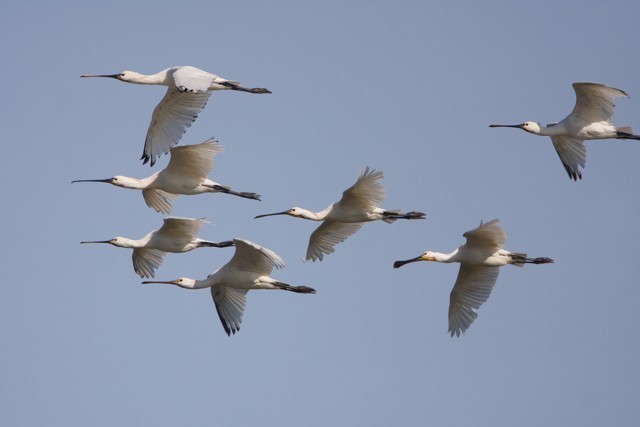
Spoonbill, Cley Marshes NWT, Norfolk (Photo: Nigel Pye)
A drake Ferruginous Duck was a great find at Skinflats Lagoon (Forth) on 25th, the bird relocating to Loch Gelly (Fife) the following day. Interestingly, a drake Ferruginous Duck spent just over a month (from mid-July to mid-August) on Loch Gelly in the summer of 2006. The same site also welcomed a returning eclipse Ring-necked Duck from 28th, presumably the same bird that was present on the loch for a month last summer. In Aberdeenshire, two drake Surf Scoters were still off the beach at Blackdog on 23rd while in Dorset fans of the drake Hooded Merganser will be delighted to know that he's still around, still present at Radipole Lake on 26th.
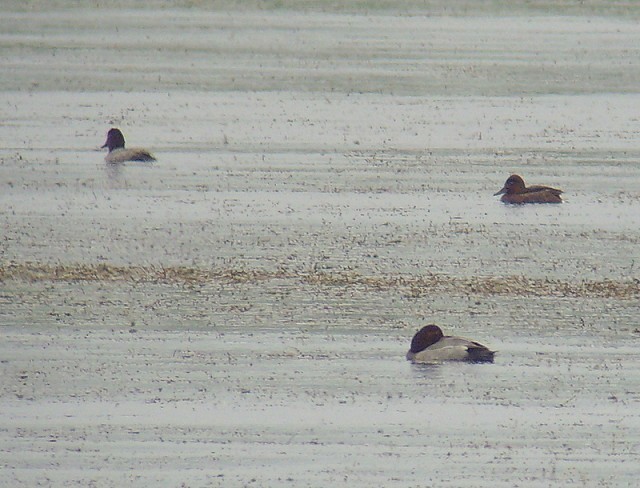
Ferruginous Duck, Loch Gelly, Fife (Photo: John Nadin)
In Suffolk, a Black Kite was watched well for a few minutes near Woodbridge on 24th and was the only raptor of note this week.
In Norfolk, the veritable soap opera that is "Lesser Golden Plover" showed no signs of letting up this week. A reprise of the story so far: a Pacific Golden Plover was reported briefly at Cley on the afternoon of 16th, reappearing in Blakeney Harbour the same day, where the first questions as to its true identity were raised. Sure enough, close views on 17th confirmed it was indeed an American Golden Plover. Then on 22nd, an American Golden Plover was discovered at Breydon Water, and was touted widely as being the relocating Cley bird. On day five of the bird's stay, the East Norfolk bird was re-identified as a Pacific Golden Plover. To add to all this, one observer came out of the woodwork to say that yes, he had definitely seen the Cley bird at Breydon, but on 15th, the day before it hit the north coast. Phew! Confused? Well, no, not really, as photos of both birds show pretty classic individuals of both species in their full summer dress. Late on 29th, an American or Pacific Golden Plover was reported flying south past Southwold (Suffolk).
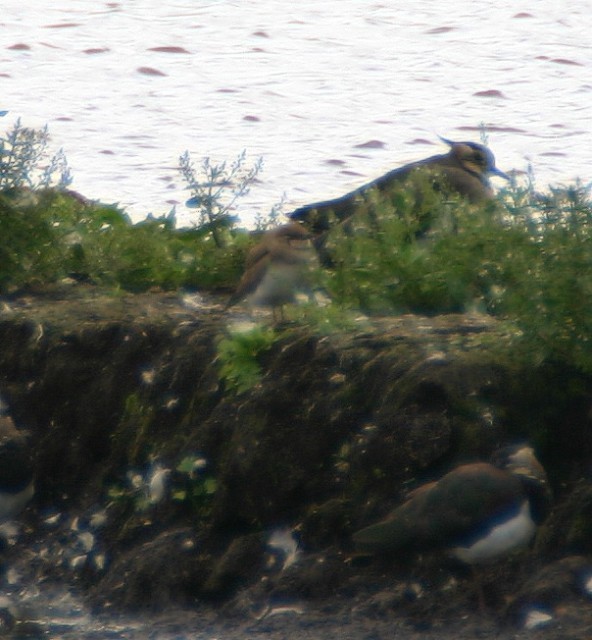
Collared Pratincole, Tophill Low NR, East Yorkshire (Photo: Richard Hampshire)
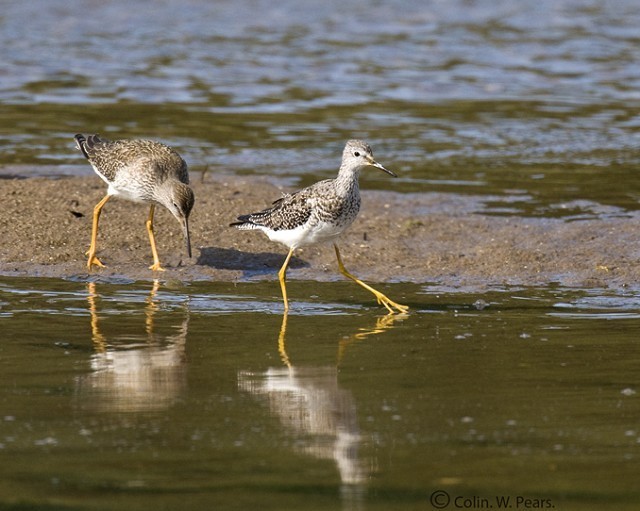
Lesser Yellowlegs, Aberlady Bay, Lothian (Photo: Colin Pears)
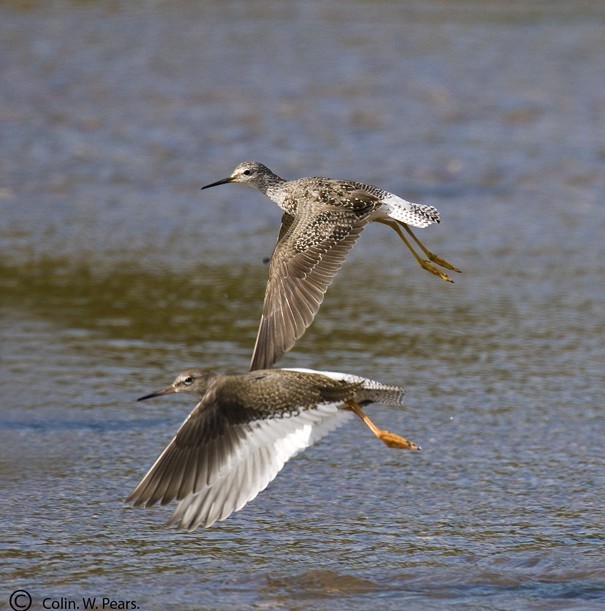
Lesser Yellowlegs, Aberlady Bay, Lothian (Photo: Colin Pears)
In East Yorkshire, the popular Collared Pratincole remained at Pulfin and High Eske Nature Reserve, near Arram, until 23rd, before heading to Tophill Low on 24th, where it stayed until 25th, flying south around lunchtime. In the same county, a Lesser Yellowlegs appeared on the lagoons at Paull Holme Strays on 24th (presumably the bird seen in North Yorkshire at the end of last week). The bird popped up again on 26th–28th while, in Lothian, the Lesser Yellowlegs at Aberlady Bay was present to 29th. A Pectoral Sandpiper paid a five-minute visit to Cley on 24th with further singles noted on North Ronaldsay (Orkney), at Cramond (Lothian), at Saltholme Pools (Cleveland), at Manby (Lincolnshire) and at Snettisham (Norfolk) during the week. A Temminck's Stint was on Old Hall Marshes (Essex) on 26th and late in the evening on 29th an adult Marsh Sandpiper appeared on Porth Hellick Pool, St. Mary's (Scilly). A tremendous rarity on the islands, this is just the second seen there: the first was a juvenile on Tresco in late July 1999.

Pectoral Sandpiper, Snettisham RSPB, Norfolk (Photo: anon)

Marsh Sandpiper, St. Mary's, Isles of Scilly (Photo: Martin Goodey)
Orkney's first Franklin's Gull remained around Graemeshall on Mainland from 23rd–25th, appearing again on 28th, while an adult Ring-billed Gull remained at Nimmo's Pier (Co. Galway) to 23rd. A first-summer Ring-billed Gull was on Lough Foyle (Co. Antrim) on 27th and a second-summer was at Clahane beach (Co. Clare) on 28th. There was only one Iceland Gull to report this week, in Dumfries & Galloway while, aside from a couple of belated records, this week's Glaucous Gull cupboard was bare. A third-summer Caspian Gull was at Canvey Island (Essex) on 29th and a Gull-billed Tern was seen and photographed at Cooley Point (Co. Louth) on the same date.
An Alpine Swift was near Brixham (Devon) on 27th and last week's female Red-backed Shrike on North Ronaldsay (Orkney) remained to 23rd. The same date saw a male Two-barred Crossbill arrive on Fair Isle (Shetland), but there are no signs of any invasions this year. Staying on Shetland, Mainland saw a Lesser Grey Shrike appear at Graven on 27th; the only other record of the species so far this year was also on Shetland, over on Bressay, in mid-June.
Photo of the Week

Common Buzzard, Gigrin Farm, Powys (Photo:
Barry Wells)
We receive a steady stream of high-quality photos from Gigrin Farm Red Kite Feeding Station in mid-Wales. Even in the last week, we've had excellent flight shots of Red Kites, both singly and en masse, showing off the superb spectacle that greets visitors (and pilgrims!) to this amazing centre. Amongst the daily 'Kitefest', though, there are also other birds, such as Common Buzzards and Ravens, that join in the feeding frenzy, but tend to get overlooked. With a superb action shot of two fighting Common Buzzards, Barry Wells shows that this is an opportunity that most photographers miss. Barry has frozen the action perfectly, with flawless timing and technique. This is actually Barry's first photo upload to BirdGuides, proving once more that our Photo of the Week is open to all comers!

Red Kite, Gigrin Farm, Powys (Photo:
Paul Hillion)

Puffin, Skomer, Pembrokeshire (Photo:
Paul Hillion)

Black Guillemot, Peel, Isle of Man (Photo:
Sean Gray)

Little Egret, Cley Marshes NWT, Norfolk (Photo:
Amanda Hayes)

Black-tailed Godwit, Netherlands (Photo:
Rudi Debruyne)

Bittern, Far Ings NR, Lincolnshire (Photo:
Don Davis)

Sparrowhawk, Stourport-on-Severn, Worcestershire (Photo:
John Robinson)

Swallow, undisclosed site, Powys (Photo:
Chris Grady)

Common Kingfisher, Rye Meads RSPB, Hertfordshire (Photo:
Pixellence)

Common Tern, Seaforth LWT (Permit only), Lancashire (Photo:
Richard Steel)
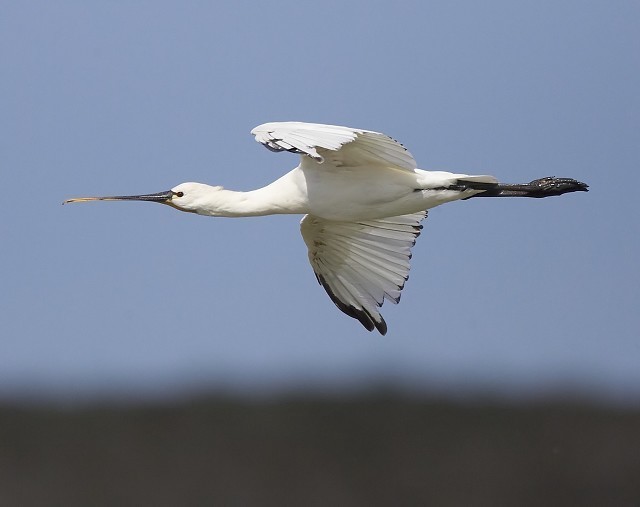
Spoonbill, Cley Marshes NWT, Norfolk (Photo:
Richard Bedford)

Little Owl, Belper, Derbyshire (Photo:
Phil Manning)

Reed Bunting, Skomer, Pembrokeshire (Photo:
Chris Bale)

Velvet-purple Coronet, Ecuador (Photo:
Duuuan M. Brinkhuizen)

Capercaillie, undisclosed site, Highland (Photo:
Chris Upson)

